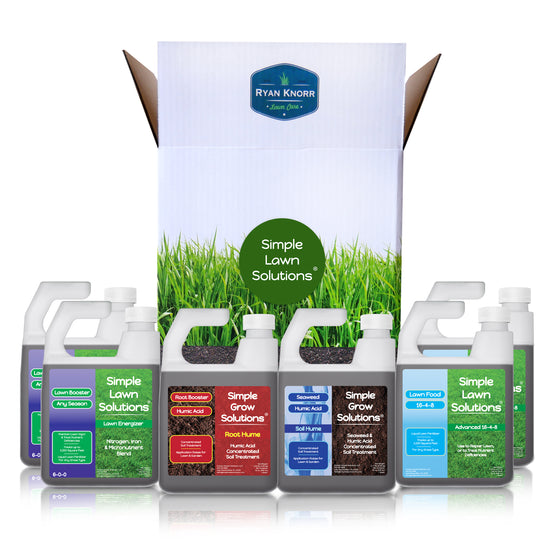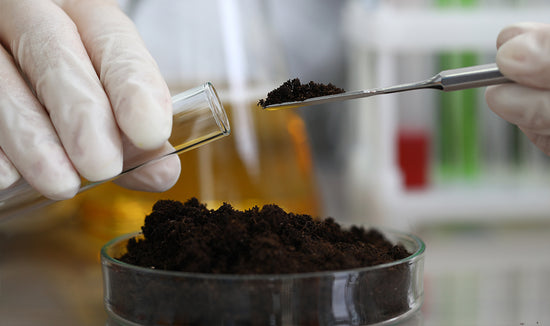Photosynthesis is an incredibly important process that allows plants to create their own food. This process requires a variety of different nutrients, which play different roles in the overall process. Without these nutrients, photosynthesis would not be possible. In this blog post, we will take a closer look at what these nutrients are and what role they play in photosynthesis. We will also explore how you can make sure your plants have all the nutrients they need to perform this essential function. So if you're interested in learning more about photosynthesis and the nutrients that support it, keep reading!
Some nutrients play obvious roles in photosynthesis, while others are required in smaller quantities and prefer to stay out of the spotlight. Either way, if a nutrient plays a direct or indirect role in photosynthesis, if that nutrient is limiting, photosynthesis will suffer.
Nitrogen - Nitrogen makes up part of the chlorophyll molecule (the pigment required for plants to harness light energy and turn it into chemical energy). Nitrogen also makes up proteins and enzymes essential for proper function of a plant's entire photosynthetic apparatus. Nitrogen is the mineral nutrient used in greatest quantity by plants and therefore is the most frequently supplemented nutrient through the use of nitrogen-containing fertilizers. Nitrogen deficiency can result in the loss of chlorophyll and plant proteins. Simple Lawn Solutions 28-0-0 is a great, all-around nitrogen fertilizer, with a mix of quickly- and slowly-available nitrogen.

Phosphorus - Phosphorus is mainly involved in the energetics of photosynthesis. It makes up part of two energy carriers essential for photosynthesis (ATP and NADP). If phosphorus is limiting, energy necessary for the reduction of carbon absorbed by the leaves will not be available, resulting in reduced photosynthesis. Applying phosphorus is reserved for establishment of turf or for those with soil tests indicating a deficiency. If this is you, try out 6-18-0 or 3-18-18, both of which are great sources of phosphorus.

Potassium - Potassium is an element that plays a sort of background role in photosynthesis. Its main responsibility is to rush in and out of guard cells that control the opening and closing of stomata. Stomata are the tiny openings in the leaf surface that allow for gas diffusion into the leaf. Open stomata allow for adequate diffusion of carbon dioxide into the leaf and also allow for water vapor loss from leaf tissue. This carbon dioxide is one of the main ingredients in photosynthesis. A potassium deficiency could result in poor guard cell function, affecting carbon dioxide uptake and water loss from the leaf. If you are looking to get some potassium into your soil or apply it directly to your turf, try out SLS 0-0-25 or SLS 15-0-15.
Calcium - Remember that ATP (under phosphorus) we mentioned earlier? Calcium is required in some reactions with ATP in order to complete the photosynthetic process. Calcium is also important for membrane structural maintenance required for proper photosynthesis. Deficiency can result in membrane degradation and decreased ATP synthesis, both of which are required for proper photosynthesis.
Magnesium - Magnesium is the central atom in the chlorophyll molecule. It is also necessary for all reactions involving phosphate transfers and protein synthesis. Deficiency results in disruption of chloroplast membranes. Chloroplasts are organelles that contain chlorophyll. Deficiency in magnesium can appear similar to nitrogen deficiency but is much less common. Magnesium deficiencies are common in sandy soils and soils high in potassium. If a soil test determines a magnesium deficiency both Lawn Energizer and Micro Booster contain readily available magnesium sources that can be taken up via the foliage of your turf.

Sulfur - Sulfur is a component of membranes including chloroplast membranes, which are responsible for the integrity of chloroplasts. Sulfur also plays a role in electron transport within the photosynthetic apparatus. SLS 0-0-25 is a good source of sulfur for a sulfur-deficient soil as its main ingredient is potassium thiosulfate.
Copper - Copper plays a role in the electron transport system within the photosynthetic apparatus. A copper deficiency would be rare, but copper sulfate would be a good source of copper to apply to your soil.
Iron - Contrary to what one may think, chlorophyll actually does not contain iron. However, the synthesis of chlorophyll requires iron. It is also required for electron transport. Maybe you’re aware of the deep greening response of plants to iron when iron is deficient. It’s important to note that iron responses to fertilizer typically only occur when the plant or soil is/are deficient in available iron. Both Darker Green, Micro Booster and Lawn Energizer are good sources of foliar iron. Iron is immobile within the plant, so an iron deficiency will be manifest in newer leaf tissue as pale, yellow leaves. Whereas nitrogen deficiency will occur in older leaves, because nitrogen is highly mobile within the plant.

Manganese - Plants obtain the hydrogen necessary for photosynthesis from splitting apart water molecules. Manganese is required for the plant to harvest hydrogen from water molecules. A manganese deficiency would result in impaired electron generation and could result in reduced chlorophyll production. Darker Green, Micro Booster, and Lawn Energizer all contain sources of manganese.
Zinc - Zinc is a component of an antioxidant necessary to neutralize free radicals created during photosynthesis. Zinc is also a component of an enzyme important to balance forms of carbon during photosynthesis. Zinc deficiency is rare but if your plant is deemed deficient, Micro Booster has zinc that can be applied directly to your lawn’s foliage and will be absorbed quickly.
Chlorine - Chlorine has a role in regulating the stomata, similar to potassium. Chlorine is also involved in oxygen evolution within photosynthesis.
Boron - Boron is not involved in photosynthesis. Boric acid is a good source if deemed deficient.
Molybdenum - Molybdenum has no known role in photosynthesis and deficiencies are rare.
Nickel - Nickel has been deemed a plant essential element, but has no known role in the photosynthetic apparatus.
If you're aiming to apply the previously mentioned nutrients foliarly, rather than to the soil, consider using our surfactant to increase the plant absorption of your fertilizer. It reduces the surface tension of water, allowing for better coverage on the leaf surface.
Now that we’ve gone over the basic elements required for photosynthesis, you should have a better understanding of how to keep your lawn healthy. If you think your soil might be deficient in any of the essential nutrients, we have a wide variety of fertilizers that can help. Head over to our website today and check out our selection. With our products and some helpful tips, you’ll be on your way to having a green thumb in no time!
*Source: Bryson, G. M., Mills, H. A., Sasseville, D. N., Jones, J. B., & Barker, A. V. (2014). Plant analysis handbook III: A guide to sampling, preparation, analysis, interpretation and use of results of agronomic and horticultural crop plant tissue. Micro-Macro Publishing, Incorporated.









